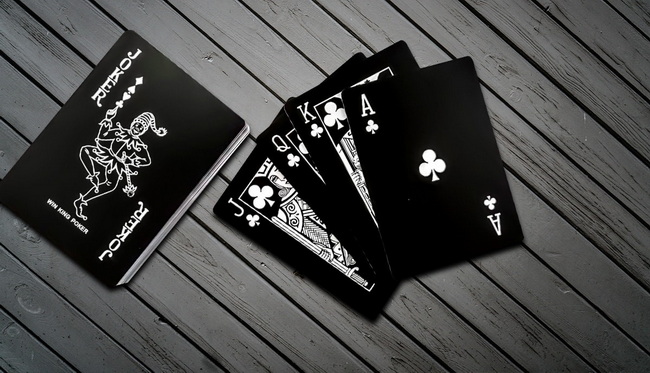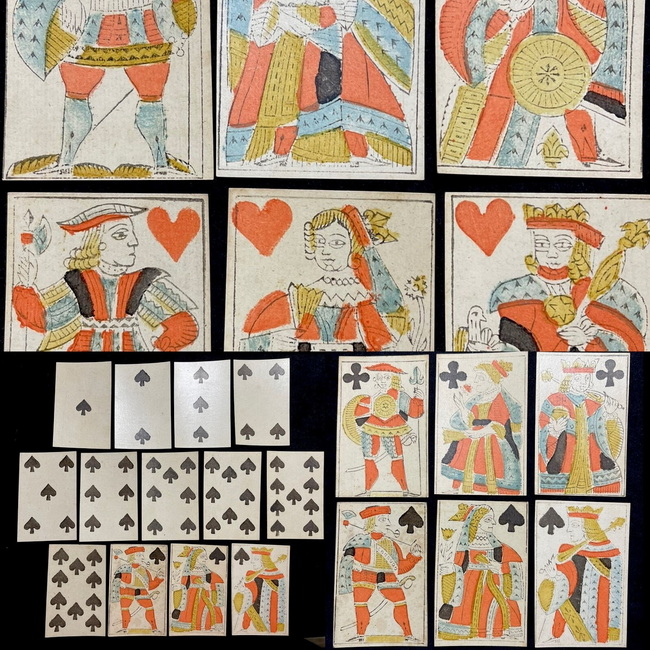Content Menu
● Introduction
● Market Overview and Regional Dynamics
● Materials, Finishes, and Card Design
● Printing Technology and Quality Control
● Packaging and Presentation
● OEM Capabilities and Customization
● Manufacturing Footprint and Supplier Landscape
● Quality and Safety Standards
● Case Studies and Practical Insights
● Procurement Considerations for OEM Collaborations
● Sourcing and Partner Selection Tips
● Conclusion
● Frequently Asked Questions
>> Q1. What factors define quality when evaluating Poker Cards Manufacturers and Suppliers?
>> Q2. How do OEM partnerships typically handle color accuracy and proofs for poker cards?
>> Q3. What packaging options are commonly offered for poker card sets?
>> Q4. What are typical lead times for custom poker card decks in European markets?
>> Q5. How should safety and labeling considerations be addressed in poker card production?
● Citations
Introduction
In today's competitive gaming and hospitality markets, the quality, design, and delivery of poker cardscan define a brand's perceived value. This article explores the landscape of poker card production and related packaging capabilities in Italy, and it highlights how a capable partner—such as a Shenzhen-based printing and packaging specialist with OEM experience—can serve international brands seeking high-quality poker cards manufacturers and suppliers services. The discussion covers materials, finishes, production workflows, quality controls, customization options, and strategic considerations for sourcing poker cards and related merchandising aids in Europe, with a clear emphasis on OEM collaboration and supply-chain reliability.

Market Overview and Regional Dynamics
Italy's playing-card sector blends traditional craftsmanship with modern print technologies. Italian brands have long leaned on premium materials, precise finishing, and aesthetic sensibilities that align with European gaming markets. Modern production lines in Italy and neighboring Europe offer scalable solutions for customization, foil embossing, and packaging coherence across product families. Close collaborations with Italian distributors and EU retailers enable streamlined logistics, rapid prototyping, and compliant manufacturing workflows for international OEM projects. The focus on durability, card feel, and consistent color registration sits at the heart of successful Poker Cards Manufacturers and Suppliers partnerships in Europe.[3][11]
Materials, Finishes, and Card Design
A high-end poker deck requires careful material selection and finishing to balance durability, shuffling performance, and tactile experience. Common substrate choices include layered pasteboard and high-quality coated stocks, which support durable lays without excessive rigidity. Finishes often include varnishes or protective coatings to reduce wear, while back designs emphasize brand and thematic coherence for easy product recognition. In cooperations that span OEM services, manufacturers may offer a range of thicknesses, from standard to premium, with options for core materials and surface textures that affect handling, bend resistance, and player experience. The choice of finish and lamination directly influences longevity in casino and home-use environments, aligning with customer expectations for “Poker Cards Manufacturers and Suppliers” that deliver repeatable quality across production cycles.[1][3]
Printing Technology and Quality Control
Printing methods for playing cards have evolved from traditional lithography and gravure to modern digital and offset approaches, enabling precise color matching, back-and-face registration, and repeatable production at scale. In production lines, color management and registration systems ensure that each face and back aligns across fusible sheets, with inline checks to detect misregistration or color drift. Quality control processes typically include bend tests, shuffle tests, and edge-damage assessments, ensuring the card stock, lamination, and surface coating meet specified tolerances for durability and feel. These elements are critical for any Poker Cards Manufacturers and Suppliers evaluating potential partners for European OEM projects, where consistency and reliability are essential to customer satisfaction.[1][3]
Packaging and Presentation
Packaging is a critical extension of the product and brand experience. Ensure that tuck boxes, blister packs, or premium presentation cases reflect the same attention to detail as the cards themselves. Die-cutting, foil stamping, embossing, and custom box finishes are common features in higher-end decks and are often offered as part of OEM packages. Packaging lines frequently integrate with card assembly lines to maintain throughput, minimize handling, and ensure correct deck sequencing before shipping. Effective packaging not only protects the cards during transit but also reinforces brand identity at the point of sale, contributing to a cohesive consumer experience and positioning within the Poker Cards Manufacturers and Suppliers landscape.[12][3]
OEM Capabilities and Customization
OEM partnerships enable brands to commission fully customized decks—from card-back artwork and suit icons to packaging typography and box geometry. A strong OEM offering includes:
- Brand-specific artwork and vector graphics support
- Color-specified back designs and face card variants
- Varied core board materials and finishes
- Custom packaging configurations and accessories
- Compliance with international safety and labeling standards
- Flexible minimum order quantities and scalable production schedules
By leveraging OEM strength, brands can achieve a consistent product line across markets while maintaining distinctive identities within the Poker Cards Manufacturers and Suppliers ecosystem. In Europe, such capabilities are complemented by logistics networks that support timely delivery to retailers, distributors, and casino partners.[11][12]

Manufacturing Footprint and Supplier Landscape
Italy hosts a mix of traditional producers and modern print houses, many with EU distribution networks. European suppliers often emphasize stringent quality control, responsible sourcing, and environmental considerations, which align with the expectations of international buyers. For brands seeking a reliable OEM partner, it is important to assess capabilities beyond aesthetics—factors such as production capacity, lead times, material traceability, and after-sales support are equally critical. The broader Italian and European playing-card sector also includes established brands with casino-grade decks and high-end collectible lines, illustrating the depth of expertise available to Poker Cards Manufacturers and Suppliers seeking premium options and strategic alliances.[5][11]
Quality and Safety Standards
Global and regional standards influence the design and production of poker cards, particularly for product safety, child resistance, and packaging labeling. Reputable manufacturers align with stringent testing regimes and independent third-party certification where applicable. For brands with international distribution, ensuring compliance with applicable safety standards, intellectual property protections, and accurate product labeling is essential. This compliance framework supports a dependable supply chain and reduces risk in cross-border OEM operations within the Poker Cards Manufacturers and Suppliers market.[5][11]
Case Studies and Practical Insights
While the European market is diverse, several case studies illustrate how OEM partnerships add value. A brand could commission casino-grade or promotional decks with bespoke artwork, a custom packaging system, and a controlled production schedule to meet event-driven campaigns or seasonal launches. Lessons from these collaborations emphasize:
- Clear specification documentation and approved proofs before printing
- Rigorous pre-production trials to validate color, finish, and card handling
- Coordinated logistics with lead-time buffers for international shipments
- Ongoing quality audits during mass production
These insights help frame the expectations for Poker Cards Manufacturers and Suppliers when evaluating potential partners for large-scale, brand-aligned deployments across Europe and beyond.[3][1]
Procurement Considerations for OEM Collaborations
When engaging with a manufacturing partner for poker cards and related packaging, buyers should consider:
- Material options and card feel preferences (e.g., smoothness, rigidity, and bending behavior)
- Face/back artwork rights, branding, and copyright considerations
- Packaging specifications, box dimensions, and protective inserts
- Color management, proofs, and digital/physical proofing processes
- Lead times, minimum order quantities, and scalable production plans
- Logistics, incoterms, and insurance for international shipments
- After-sales support, replacement policies, and defect management
- Sustainability and supplier responsibility programs
These considerations help ensure a smooth, value-driven OEM collaboration that aligns with strategic business goals and customer expectations in the Poker Cards Manufacturers and Suppliers ecosystem.[12][1]
Sourcing and Partner Selection Tips
To choose the right Italian or European OEM partner, buyers should:
- Request detailed capability briefs and sample decks
- Review production capacity, uptime, and contingency planning
- Inspect color management workflows and proofing procedures
- Assess packaging versatility and customization options
- Seek customer references and evidence of on-time delivery
- Evaluate sustainability practices and compliance records
- Consider geographic proximity for faster prototyping and shorter supply chains
A methodical evaluation framework reduces risk and accelerates decision-making for Poker Cards Manufacturers and Suppliers engagements.[11][12]
Conclusion
Selecting the right Poker Cards Manufacturers and Suppliers is central to delivering a cohesive product experience that resonates with players and retailers alike. An OEM-focused approach that emphasizes material quality, precise color and layout control, appealing packaging, and reliable logistics will yield decks that perform consistently across markets. Italy's blend of tradition and modern print capability, combined with robust European distribution networks, provides a fertile landscape for both established brands and emerging campaigns. For brands and distributors seeking scalable, high-quality poker card solutions, partnering with a supplier that can deliver end-to-end customization, controlled production, and dependable service is essential to sustaining competitive advantage in the global market. This approach aligns with the broader goals of Poker Cards Manufacturers and Suppliers, supporting enduring brand value and player satisfaction across channels.

Frequently Asked Questions
Q1. What factors define quality when evaluating Poker Cards Manufacturers and Suppliers?
- Quality hinges on card stock, finish, ply count, uniform color, back/face registration accuracy, durability under shuffling, and reliable packaging and labeling practices.[11]
Q2. How do OEM partnerships typically handle color accuracy and proofs for poker cards?
- OEMs provide digital proofs and physical proofs for approval, then apply strict color-management workflows and inline QC to ensure consistent color across batches.[12]
Q3. What packaging options are commonly offered for poker card sets?
- Common options include tuck boxes, premium presentation boxes, plastic cases, and custom inserts, with embossing, foil, or specialty finishes often available.[13]
Q4. What are typical lead times for custom poker card decks in European markets?
- Lead times vary by scope and quantity but usually range from several weeks for standard runs to multiple weeks for highly customized orders, with faster timelines possible for rush projects.[14]
Q5. How should safety and labeling considerations be addressed in poker card production?
- Ensure compliance with international safety standards, accurate material disclosures, warnings if applicable, and clear branding and jurisdiction-specific labeling for cross-border shipments.[15]
Citations
[1](https://www.hopesgame.com/news/do-you-know-the-process-of-making-playing-poker-cards.html)
[2](https://www.youtube.com/watch?v=xr-8eFFJEas)
[3](https://wjplayingcard.com/how-are-playing-cards-made/)
[4](https://dalnegro.com/en/production/)
[5](https://dalnegro.com/en/casino/)
[6](https://www.macaumr.com/product/100-plastic-italy-modiano-texas-poker-cards-poker-size-jumbo-index/)
[7](https://www.macaumr.com/custom-casino-playing-cards/)
[8](https://www.fugun-printing.com/casino-grade-card)
[9](https://www.abbiati.com/wp-content/uploads/2020/04/abbiati-cartamundi-casino-playing-cards.pdf)
[10](https://www.youtube.com/watch?v=XaXN_bfzk00)
[11](https://www.modiano.it/en/casino-cards/)
[12](https://www.xkdisplay.com/top-playing-cards-manufacturers-and-suppliers-in-europe.html)
































